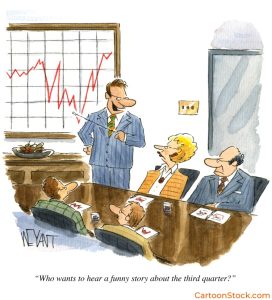We’ve all sat through presentations that felt endless – slide after slide, dense with data, and little to no human connection. Humor can change that. When done right, it breaks down barriers, builds rapport, and keeps your audience actively engaged.
In this guide, we’ll explore how to use humor in presentations to make your message more memorable, relatable, and effective without risking your credibility. Whether you’re presenting in a boardroom or a virtual meeting, humor can be your secret weapon for engagement.
Why Humor Works in Business Presentations
Humor isn’t just about making people laugh; it’s about connection. It makes you more relatable and puts your audience at ease. In a presentation, humor can:
-
Help your audience retain information.
-
Make complex or dry topics easier to digest.
-
Encourage participation and interaction.
-
Create a positive, memorable experience.
But knowing how to use humor in presentations is just as important as knowing why. Poorly timed or inappropriate humor can distract, or worse, alienate your audience.
How to Use Humor in Presentations the Right Way
1. Know Your Audience
Humor is subjective. What works for one group might not land with another.
-
A room full of senior executives might prefer dry wit or subtle wordplay.
-
A creative team might appreciate something more playful or self-deprecating.
Always consider your audience’s culture, expectations, and the setting.
2. Keep It Relevant
The best humor ties directly into your message. A cartoon or joke that feels unrelated can undermine your authority.
For example, if you’re presenting on project management challenges, a cartoon about juggling tasks reinforces your point and keeps it light.
See How to Use Cartoons in Corporate Presentations Without Looking Unprofessional for tips on keeping humor appropriate.
3. Use Professional Visual Humor
Visual humor – like cartoons – is an easy way to add levity without putting yourself on the spot to deliver a joke.
-
A well-placed cartoon can clarify a complex concept.
-
Single-panel cartoons work great as icebreakers or to introduce a new section.
Explore The Best Cartoon Styles for Different Business Presentation Topics to find the right tone for your message.
4. Be Authentic
Audiences can sense when humor feels forced. If you’re not comfortable telling jokes, don’t try to be a stand-up comedian. Use natural humor that fits your style.
-
Personal anecdotes often work well.
-
Self-deprecating humor (within reason) can make you more approachable.
5. Timing Is Everything
Use humor at key moments to keep energy levels up.
-
Open your presentation with a cartoon or light comment to break the ice.
-
Insert humor between sections to give your audience a breather.
-
End on a light note to leave a lasting positive impression.
For ideas on icebreakers, check out Using Humor in Business: The PowerPoint Icebreaker.
Common Mistakes to Avoid When Using Humor in Presentations
Even good humor can go wrong if not handled carefully. Avoid:
-
Offensive or divisive jokes: Stay away from politics, religion, or anything that could offend.
-
Overdoing it: A presentation full of jokes loses focus and credibility.
-
Forgetting your global audience: What’s funny in one culture might fall flat, or cause offense, in another.
Final Tips on How to Use Humor in Presentations
Humor is a powerful tool when used thoughtfully. It can help you connect, clarify, and keep your audience engaged. Remember:
-
Keep it relevant and professional.
-
Match your humor to the audience and setting.
-
Use cartoons and visuals to add humor without relying on your delivery.
For more insights on using cartoons to boost engagement, visit our guide:


